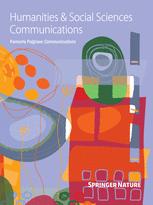Studies were done in order to assess variation in fruit size and weight, nut size andweight and determinate relationships between these characteristics and price using 149samples of Dacryodes edulis fruits from three markets at the peak of season inCameroon. 50 samples per market in two markets (Mfoundi market [Yaonde] andMakenene centre market) and 49 samples in Makenene East market were boughtrandomly from traders. The measurement of 10 characteristics of 24 fruits per sampleidentified significant variation in fruit size and weight and nut weight in each market.Fruit price was found to vary with flesh mass, fruit mass and fruit size in retailersmarkets while wholsalers don’t take into account fruit variability. In contrast, pulp priceper kg was negatively correlated with flesh weight in wholesalers’ markets. The mostfrequent skin colour was “georgetown lime” (29A7 in the Methuen colour code) and themost frequent flesh colour was violet (18D6 in the Methuen colour code). From thisstudy, Dacryodes edulis fruit ideotype fetching highest price in the retailers markets ischaracterized by length, flesh and fruit mass and white skin colour.
















